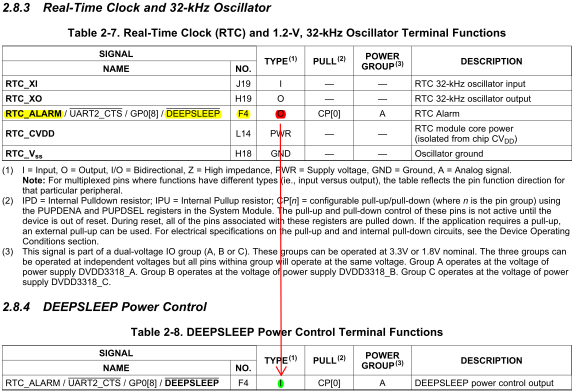Hi,
Can RTC wake-up and external device wake-up coexist for OMAP L138 DEEP SLEEP mode?

Point 1
I read from page 219, §10.10.2 of SPRUH77 OMAP-L138 C6-Integra DSP+ARM Processor Technical Reference Manual, that when RTC mode is used to wake L138 up:
[pin F4, DEEPSLEEPn/RTC_ALARM] output be set as input via PINMUX0.
Since [pin F4] is an I/O pin, when its direction is output the input buffer will be driven by the output status, i.e. RTC_ALARM.
Therefore, basically this same pin, RTC_ALARM dictates DEEPSLEEPn. This rules out any possibility that an external device, for example a simple button, to be used to wake up the CPU.
This also means that, once the deep sleep mode is entered, there is no way to exit until RTC reaches the time and sends an interrupt. If some bad programming happens such that RTC alarm time is erroneously set to 1 hour, then the after entering DEEP SLEEP mode the CPU has to wait for another hour to wake up.
Is it true?
Point 2
I wonder why the design is like this. A more acceptable design would be not muxing RTC_ALARM with DEEPSLEEPn and DEEPSLEEPn as a separate pin. The connecting between the two pins should be left to the customer externally. In this case, there can be more than one devices driving DEEPSLEEPn. For example, a button might be provided to drive DEEPSLEEPn high, in addition to RTC_ALARM. By using a simple AND gate, all wake-up signals would work simultaneously without contention.
Could anyone confirm for the 1st point, or comment on the 2nd point?
Zheng
